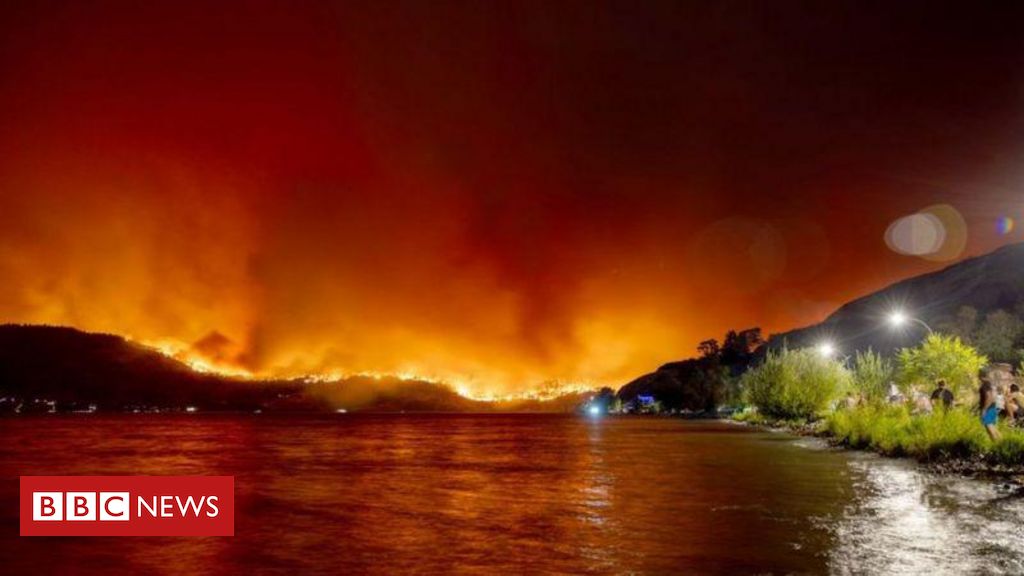Since For a long time, most scientific studies, even those with the most remarkable results, struggled to reach a wider audience because of unattractive (or sometimes too technical and intelligible) titles. But researchers, as they become increasingly concerned about the adverse and increasingly intense effects of climate changebegin to incorporate into their scientific studies a punctuation mark which, for them, is uncommon: the exclamation point.
“SOS! smoke summerreads the title of a study cited in reports prepared this year by the UN’s Intergovernmental Panel on Climate Change (IPCC). Another study proclaims: “Too hot to help!”
For climate activists, the exclamation point has long been used on protest or awareness posters, from “Climate Action Now!” to “There is no planet B!”, for example. Activists hope that the exclamation marks, by sparking insights that match scientific findings about the deterioration of the planet, can lead to greater efforts to reduce greenhouse gas emissions. Greenhouse effect.
Marcelo Sayao/Lusa
Some researchers say that the appearance of the exclamation mark in scientific works, generally more inclined to cautious euphemisms, reflects the growing concern of society over rising global temperatures.
Adeniyi Asiyanbi from the University of British Columbia (Canada) wrote a report that the IPCC quoted and whose title is as follows: “‘I don’t understand this scene from climate!’ Understanding climate change among the middle business class in Lagos [cidade da Nigéria].” The exclamation point came from a conversation the author had with a Nigerian businessman who was frustrated that climate crisis mitigation measures were, in his view, difficult to understand.
“I wouldn’t be surprised if it turns out that [alguns investigadores] they deliberately use the exclamation mark to create a sense of urgency – and also to instill some fear. Personally, I have reservations about the use of the exclamation mark. But that’s what I see,” says Adeniyi Asiyanbi.
The IPCC’s February report, which deals with adaptations to the impacts of climate change, references more than a dozen studies with exclamation points in their titles. A scientific assessment by the IPCC in 2014 was shorter than that February report, but still cited only four such studies.
The IPCC does not have specific guidelines regarding the use of exclamation marks by its authors, explains a spokesperson for the scientific and political organization, Andrej Mahecic.
In its reports, the IPCC avoids using the exclamation mark, except when citing titles of other studies. There is, however, an exclamation mark in the second chapter of the February report. Here is the sentence: “Higher temperatures also increase the rate of mosquito bites, the development of parasites and viral replication!”
The exclamation mark will be removed in the final version of the document, says Camille Parmesan, one of the authors of the second chapter of the February report. “No, as a general rule the IPCC does not use exclamation marks (!!!!!),” he wrote in an interview via E-mail.
Between the sobriety of scientific journals and the noise of social networks
Many scientific journals limit the use of the exclamation mark, fearing that it will make authors sound like they are shouting in a defeatist tone.
This is what the style book of the famous scientific journal says Science: “The exclamation mark is rarely justified in scientific writing, except when used as a factorial symbol in mathematics.” “THE Science may allow the use of an exclamation mark as part of a direct quote, but we do not use exclamation marks for emphasis,” adds Meagen Phelan, an advisor to the scientific journal.
Group magazines nature are also not fans of the exclamation mark. “Our general guideline is to avoid it”, summarizes Lisa Boucher, advisor to the Springer Nature.
On the other hand, this flashy punctuation mark is full of posts on social media, with users expressing emotions ranging from horror to excitement.
An unlikely example for some scientists who have recently used the exclamation mark in their scientific work, former US President Donald Trump filled his tweet exclamation marks before your account is blocked. During a cold snap in January 2019, Trump wrote: “What’s up with the Global warming? Please come back soon, we need you!”
Nowadays, even the most cautious users adopt in their tweet the exclamation point, in an attempt to be heard. With the severe heat waves this summer, the United Nations Framework Convention on Climate Change has forecast a emoji a warning sign (a yellow triangle with a black exclamation point) on a Tweeter in which he says that rising temperatures increase the likelihood of death (due to heat stress).
“The situation is becoming more and more dire, so the use of exclamation marks is becoming more and more appropriate,” says John Hay, part-manager of social media for the United Nations Framework Convention on Human Rights. climate change — who, by the way, rarely uses the exclamation mark on Twitter.
Liuba Belkin, from Lehigh University (United States) and who studies social psychology, is the author of the study “Too hot to help! (the study that was also cited by the IPCC). It’s about the idea that amid heat waves so intense they condition people’s energy, store workers in Eastern Europe are less likely to help customers. The study was published in the journal European Journal of Social Psychology.
“I try to use meta-communication (exclamation marks, smiliesetc.) as much as possible, to enrich and convey the message more accurately”, explains Liouba Belkin.
Still, many are undecided about the use of the exclamation mark. Danny Rubin, author of books on business communication, is of the opinion that exclamation points are overused, which takes away their value, and are rarely used to communicate “enthusiasm or urgency”. “As with everything, moderation is key,” he says.

“Freelance communicator. Hardcore web practitioner. Entrepreneur. Total student. Beer ninja.”







